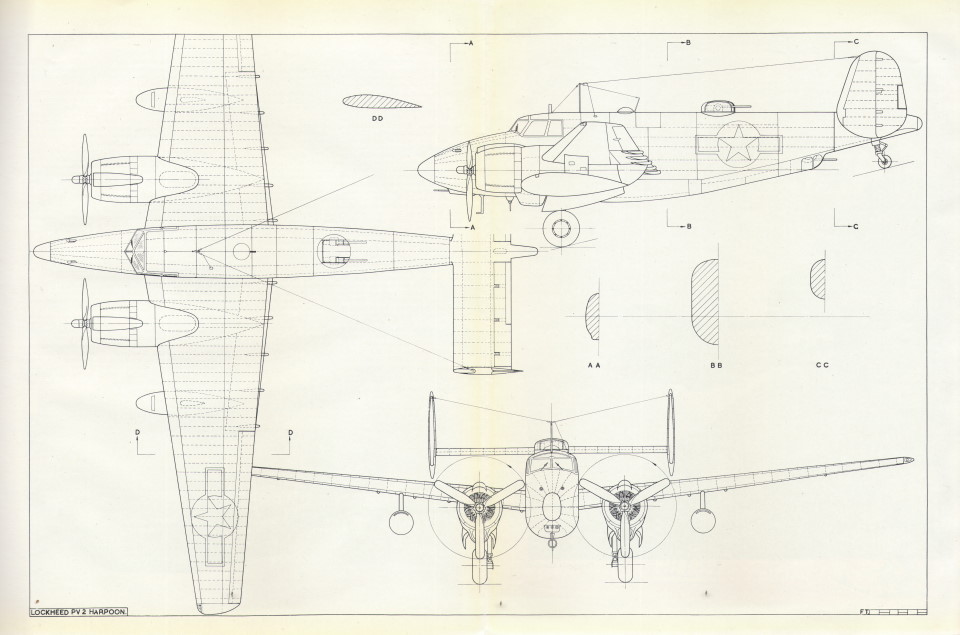SCALE MODELLERS' MARKET PLACE
THIS MONTH'S NEW MODELS REVIEWED BY EXPERIENCED MODELLERS
LOCKHEED VEGA PV1 VENTURA
Manufacturer; Minicraft Models Inc (Academy)
Scale: 1:72nd
Prica: £7.99
Type: Injection moulded
I've had this kit for a few months and not had the opportunity to make it. That's the trouble with this job, one cannot always produce the kit one wants to because of the limitations of the editorial task and other calls upon one's spare time. Nevertheless, it has now been completed and has come up to the expectations thai one would imagine from a lineage like Minicraft Inc and their previous associations with Hasegawa.
The background is interesting because after the Hasegawa agency was lost, Minicraft sought other ways in which to make an honest buck eventually settling on the production of their own kits, but in Korea, Hence the name Academy associated with this kit.
My anticipation and enjoyment of putting it together was borne out to the full as I can report that this model is a very good example of what should be the standard for all injection moulding manufacturers and, as was expected, fitted together with the absolute minimum of effort.
The only time that elbow grease in the form of nibbing down any difficult part needed to be applied was in the engine nacelle area where I did apply a little body putty to overcome the joint line and ease the fit between the upper and lower sections.
There are 67 parts, including the clear transparencies. These are moulded in a mid-grey plastic which Is a good base colour for the US Navy colour scheme and decals provided.
Although the name Ventura is applied to this kit it is slightly different from the Royal Air Force Ventura which was used on short-range bombing missions during 1941-43. This had a transparent nose and a rear turret reminiscent of its predecessor, the Hudson. The Minicraft model is of the PV-1 which was used for patrol duties over the Pacific by the US Navy throughout World War 2 until it was followed by the Harpoon in late 1944. By contrast it had a solid nose and an Emerson turret with two .50 inch calibre machine guns and of a much flatter profile than the RAF one.
Obviously one immediately thinks of making a conversion but the Rareplanes vacuform model of the RAF Ventura is still around and it is rather pointless to go to the trouble of cutting this one up whilst a perfectly good vacuform requiring just as much skill to put together is available.
I was particularly pleased with the way in which the fuselage windows, transparent nose panel and the turret fitted so exactly into their allotted places. This made a lot of difference to the final look of the model mostly around the cockpit area. Both the bomb bay doors and the undercarriage doors are joined together and must be cut apart if either is to be placed in the open or down position. I chose to leave the bomb doors closed as this would have meant building a complicated interior about which 1 had little reference and on that point it would have been nice to see a little more detail in the wheel wells. The cockpit interior on the other hand has quite a few bits and pieces to fit in. Two spectacle-type control columns are provided along with seats, an instrument panel and suitable decals, plus the rear bulkhead. The upper turret detail is also good but the underside one lacks a lot. One simply pokes the twin guns through the transparency and adds a little adhesive to keep them in place.
The paint scheme suggested is non-specular sea blue, intermediate blue and white, which is, I always think, an attractive paint job and gives the chance for some neat airbrush work. where the three colours meet. The markings provided are for an aircraft of VB-135 operating from Attu in the Aleutians. To obtain the semi-matt finish that most of these aircraft had on leaving the factory. I painted the model in matt and then gave it a full gloss coat of varnish onto which the decals were applied. This overcame decal outline film and they were set well in place when I gave a simple coat of matt varnish to complete the job. This knocked the gloss back far enough to provide the semi-matt finish t wanted.
The whole model was fairly simple to put together and painting provided a full weekend's work as plenty of time was needed to let paint and varnish dry before the next coat was applied. An enjoyable experience and a model that is generally available through the direct mail advertisers in this magazine.
Alan W. Hall
|





